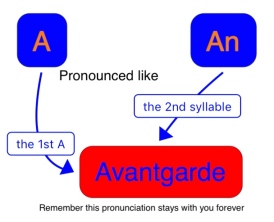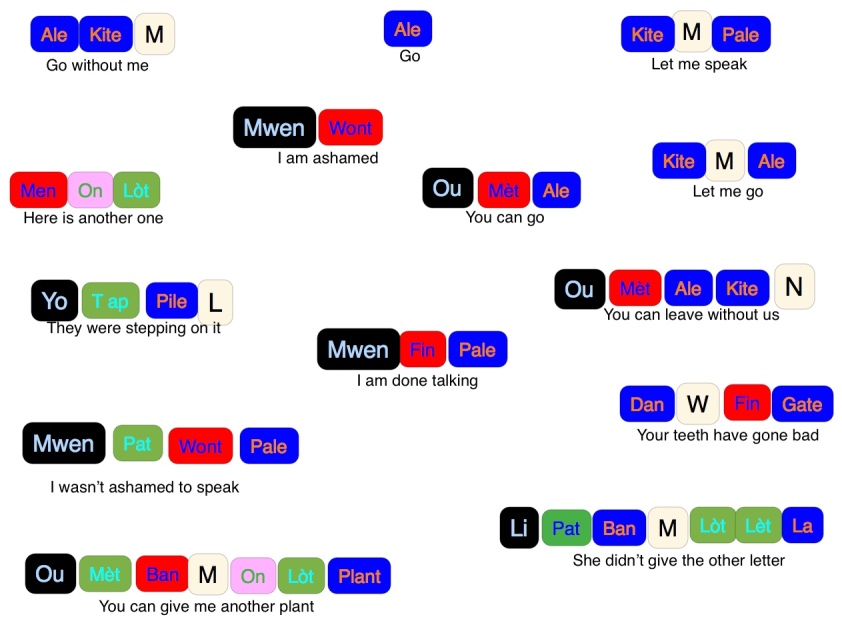Kreyòl is super easy to learn, so easy we are going to count to 10 and you’ll begin speaking. We teach by association, which means we use words you already know. Kreyòl and English have a lot of words in common; words where the spelling is exactly the same in both languages. Therefore you already know how to write a lot of Kreyòl words; the most challenging part is the pronunciation, which we’ll work through together. We also came up with an easy method to help you remember the meaning of the words. Enough said let’s get to it; It’s going to start out a bit challenging, but I promise a Happy Ending.
The first two words I was going to teach you were the ones below, but I realize you already know them. All I have to do is display them and tell you how to pronounce them; guess what, by pure coincidence, they play pretty much the same role in Kreyòl; they are also synonyms, definite articles instead of indefinite in English and they are placed after the noun instead of before. Exact same words, how crazy is that? Example: An airplane is ‘Avyon an’; a shirt is ‘Mayo a’

Now for the pronunciation, we will use an English word borrowed from French; please note and never forget that Kreyòl is a phonetic language. That means the sounds and spelling you learn today never change, as phonetics are written one way and one way only. Once you get used to that notion, the pronunciation becomes a breeze.

While we are at it, here is another important concept, N after a vowel is always silent, unless it’s NN after A, E, or O, or if N is preceded by I, in those cases the N is pronounced. Translation for Wind is ‘Van‘, see pronunciation above but translation of the verb to Sell is ‘Vann‘, in which case the second N is pronounced, while in the former case N is silent.

Let’s cover a couple more, somewhat difficult and painful, concepts that you need to memorize before we get to the easy stuff. The goal is to get you to speak immediately after this very article. To achieve that, we need to introduce the pronouns and some more articles in addition to A & An that you learned earlier. They will help you formulate sentences in no time.

We won’t look at all in detail, but let’s examine a couple of pronouns and share some tips to help you pronounce and remember them. The first personal pronoun I, translated ‘Mwen‘ should not be difficult to pronounce; it’s same as the English word, Men with a W in between with N silent. By making that association, it is a reminder to not only remember the spelling, but to also the meaning. By the way, as far as W is concerned, there virtually is no difference between the two languages in terms of pronunciation. The second pronoun is You without Y while the third Li is pronounced like Lee. The next two are kind of tricky: Not in both cases; you’ll get used to them by practicing. The last one is the slang English word: Yo. Lastly for the abbreviated forms, you don’t call out the standalone letter; ignore the space; it’s like pronouncing Pam or Pa M, Pal or Pa L.

Now the easy stuff: I am going to throw a whole bunch of words at you. Recognize any of them? If you ignore the apostrophe in some, or a space or an accent in others,


And now to get you speaking, here are some sentences using words you already know paired with articles and pronouns you learned earlier.


3 thoughts on “EZ Kreyòl for English Speakers (Part I)”